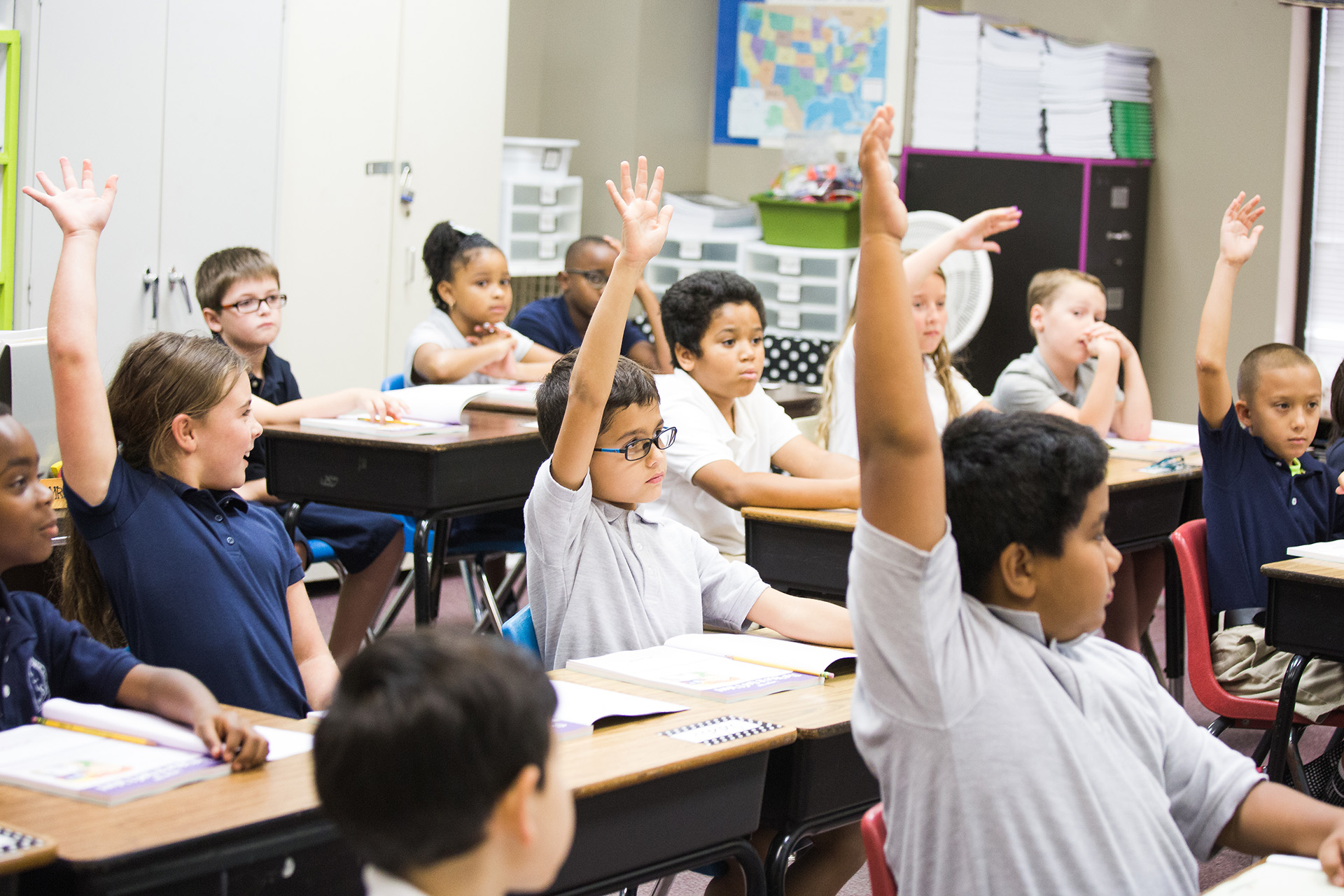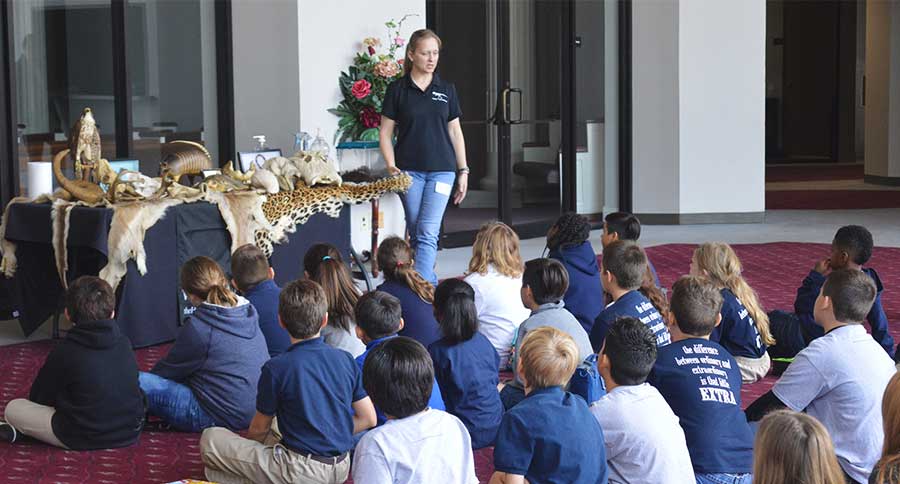Bible: Students hear Bible stories rich in characters and events that show God’s glory and goodness. Students memorize scriptures, catechisms, and hymns.
History: Students are introduced to Texas symbols, Spanish and French explorers, Spanish missions, and Texas Independence. Our studies culminate with a Texas Independence Day performance and celebration.
Language: Students continue to practice handwriting and spelling. Students are introduced to grammar jingles and begin to write sentences, paragraphs, and short stories. Students also write a book of poetry to coincide with our poetry unit in the spring.
Reading: Students learn through a phonics-based curriculum. Teachers use classic literature. Students are exposed to may genres, including fiction, fairy tales, myths, non-fiction, and poetry.
Science: Our science theme is water. Students experiment with the nature of water, keep and observe classroom aquaria and terrariums, and explore the water cycle and weather. Students learn fundamentals of other science topics and begin aquatic classification.
Math: Students use concrete and pictorial models to create a set. They use some, more, fewer, greater than, less than, equal to, greatest, and least. They use place value models and charts; use the order, grouping, and zero properties to develop addition and subtraction fact strategies; and add and subtract with and without regrouping. Students formulate addition and subtraction stories and use mental math strategies. Students learn to tell time and use a calendar, add equal groups to introduce multiplication, explore shapes, and use charts and graphs.




